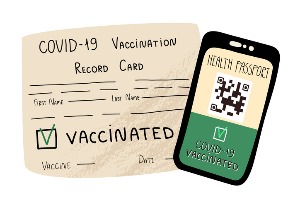
Nonprofit organizations play a crucial role in our communities, offering services, support, and a voice for those in need. However, managing a nonprofit, particularly in terms of staffing and volunteer teams, comes with its own set of challenges—especially when it comes to finances. Balancing the budget while ensuring your organization can function effectively and make an impact is a delicate dance. Fortunately, there are strategies that can both save money and strengthen your team. One significant, yet often overlooked area of opportunity lies in how nonprofits manage unemployment costs.
Reassessing Your Unemployment Tax Strategies
For over 40 years, UST has stood as a steadfast ally to nonprofit organizations, providing a pathway to substantial savings and operational efficiencies through the UST Trust. For 501c3 nonprofit employers, understanding how to manage unemployment costs effectively can unlock funds that are better allocated towards mission-critical activities.
The concept is straightforward but powerful. A federal law exists that allows 501c3 nonprofits the option to opt out of the traditional state unemployment tax system. Instead, organizations can become reimbursing employers, paying the state only for their actual unemployment claims—dollar for dollar. This approach can lead to significant savings, especially for nonprofits with stable employment rates.
Building a Financial Asset While Saving Money
UST Trust was established in 1983 to assist nonprofits in navigating this alternative. By choosing UST Trust for your tax reimbursements, your organization can create a reserve fund that not only prepares you for unemployment claims but also serves as a financial asset. Nonprofits that have embraced this strategy with UST have seen savings of 60% or more on their unemployment expenses.
But the benefits extend beyond just cost savings. Being a part of UST Trust means gaining access to a suite of tools designed to mitigate risks and increase operational efficiencies. From human resources advice to legal consultation and claims management, UST supports nonprofits in strengthening their operational backbone, allowing them to focus on their core mission.
Taking the Next Step
For nonprofit leaders seeking to explore the potential savings and benefits UST Trust offers, the first step is simple. UST is inviting nonprofit organizations to fill out a free savings analysis. This no-obligation analysis could be the gateway to significant savings and a more efficient way to manage your nonprofit’s unemployment costs.
If your nonprofit is looking to save money, reduce risks, and boost operational efficiency, consider exploring UST’s Trust program. By filling out a free savings analysis today, you can discover potential savings that could be a game-changer. This step not only leads you towards financial sustainability but also ensures your team and mission receive the needed support to thrive and make a positive impact in your community.
Efficiently managing your unemployment expenses enables you to reallocate funds where they matter most – your programs and staff. It’s time to seize control of your organization’s financial well-being and guide it towards a future where every dollar drives your mission forward without unnecessary overhead costs.
Take the initiative today. Reach out to UST to uncover how your organization can save, strengthen your team, and amplify your impact.

Running a nonprofit is the noblest example of a labor of love. The mission and vision are clear, the team driven by passion, and the pursuit of bettering the world is unflagging. However, in the midst of this impassioned journey, the need for structuring operations can sometimes be overshadowed. One of the pivotal yet often underestimated tools in the nonprofit’s arsenal is a well-crafted employee handbook—your statutory script that helps maintain order while supporting the organization’s growth and sustainability.
The Importance of an Employee Handbook
An employee handbook is the cornerstone of any professional organization. While the regulations governing nonprofits may vary, the need for clear and concise guidelines for employees doesn’t. Imagine your handbook as a detailed map of the terrain that marks out safe and sanctioned paths for your employees to traverse through their professional environment.
In the context of a nonprofit, where the spirit of the cause is integral, a handbook goes beyond a list of do’s and don’ts. It reflects your commitment to transparency, fairness, and nurturing a supportive work culture. It outlines your value system and empowers your team members with the knowledge necessary to align their actions with the organization’s broader goals.
Crafting Policies Tailored to Your Mission
Here, we delve into the art and science of handbook policy-making for nonprofits. The policies you establish and the language you use should mirror the unique essence of your nonprofit’s mission. For instance, if your nonprofit’s primary focus is environmental conservation, your handbook could include specific guidelines for eco-friendly practices at the workplace and during off-site events. Similarly, if your cause deals with vulnerable populations, your policies would need to highlight confidentiality and sensitive handling of information.
It’s not just about what you should include but also what you can exclude. As a nonprofit, your policies should be lean and mission-specific, steering clear of the bureaucratic verbosity often found in corporate manuals. Your intrinsic appeal lies in the directness and decisiveness with which you address matters, both operationally and ethically.
Understanding Charitable Compliance
For nonprofit policies, compliance is not just about what is obligatory under general labor laws but also about adherence to the specific clauses that ensure their charitable and tax-exempt status. Here, a thorough understanding of IRS guidelines and any state-specific laws is imperative. Your handbook should not just parrot legal jargon; it must integrate compliance with your organization’s spirit and mission, making the rules as impactful as possible.
Volunteer Inclusion and Engagement
Volunteers are the unsung heroes of the nonprofit world. Ensuring their inclusion in your handbook and understanding their legal standing is non-negotiable. Whether it’s guidelines for volunteer work, reimbursement policies, or recognition practices, a comprehensive handbook accounts for the unique role and importance of volunteers in organizational success.
Language That Leads
The language in your handbook is critical. It should be devoid of ambiguity, friendly but firm, and most importantly, it should inspire and guide. While there may be a temptation to formalize language due to legal stipulations, strive for a balance that never detracts from the heart of your mission and the human element it embodies.
Tailoring Your Tone
The voice of your handbook should echo your organization’s culture. If you’re an advocate for child welfare, the voice should be compassionate and assertive, reflecting the seriousness of the cause. If environmental sustainability is your banner, a tone laced with urgency and practicality can underscore policies on waste management.
The Clarity Imperative
Every word matters when it comes to a document as vital as your employee handbook. Use examples, case studies, and bullet points to break down complex or lengthy policies. Clarity ensures that your workforce understands not just the ‘what’ and ‘how’ of your policies but also the ‘why’.
Regular Updates to Reflect Your Evolution
Your nonprofit is not static, and neither are the policies that govern it. Any changes to your mission, legal requirements, or strategic direction must be swiftly echoed in your handbook. Regularly scheduled reviews should be a part of your nonprofit’s policy infrastructure to maintain relevance and currency.
Accessibility and Distribution Best Practices
An important yet underrated consideration is the distribution of your handbook. Ensure all employees and volunteers have easy access to the most current version. Whether through a digital platform or printed copies, accessibility ensures that your policies can be easily referenced and understood by all.
A nonprofit’s employee handbook is more than a compliance document; it’s a declaration of organizational philosophy and commitment. Crafting policies that resonate with the heart of your mission can amplify your work, solidify your team, and project a professional image to stakeholders and the public. Make your handbook an ally in your nonprofit’s journey—after all, even the noblest of causes deserve a blueprint for prosperity.
In today’s digital world, efficiency in HR management is not just beneficial; it’s crucial. UST understands the unique challenges that nonprofits face in managing human resources effectively. With HR Workplace, powered by Mineral, your team can build efficiency into HR workflows, ensure compliance to mitigate financial and reputational risks, and get empowered with resources that can do more for your employees.
With UST, you gain discounted access to Mineral’s smart employee handbook builder, alongside a wide array of HR and cost saving solutions for nonprofit employers. Mineral’s smart employee handbook builder is a game-changer for nonprofits, allowing you to build federal and multi-state compliant handbooks with ease. With features like Spanish translation and automatic updates, it keeps your policies not just comprehensive, but accessible and in line with the latest legal and HR best practices. Try our FREE 60-day HR Trial today!

Professionals in the nonprofit sector are often more motivated by the mission over a high salary and interested in pursuing leadership roles that enable them to make a bigger impact towards their mission.
Many nonprofit executives and managers strive to understand how to improve leadership among their dedicated team members. Leadership in this context encompasses more than just guiding the organization towards its goals. It involves inspiring a team, cultivating a passionate and dedicated environment, and fostering a sense of shared purpose and camaraderie. It is important to remember that effective leadership goes beyond mere guidance; it involves creating an engaging and empowering atmosphere for everyone involved.
The challenges that nonprofits typically face, including limited resources, high community and peer expectations, and the need to maximize impact, require more and more unique effort from leaders. Nonprofit leadership requires individuals who possess a combination of strategic and resourceful capabilities, a deep connection to the organization’s mission, and an ability to embody its values.
While some of the necessary characteristics for leadership roles are organic to an individual, there is plenty that you can do to maximize natural talents by committing to nonprofit leadership training for your staff.
Please continue reading to discover how to identify potential leaders and how to develop a leader. With nonprofit executive leadership training, you can create a steady pipeline of caring and dutiful future managers and executives.
Tips for Improving Leadership Skills
Although some professionals are born with some natural leadership skills, they may need some guidance to hone and develop those skills to become a leader within your organization.
In this section, we delve into some practical and actionable tips for how to improve leadership. These steps are crucial for driving your organization forward with potential talent from among your existing and future team members.
1. Offer Broader Exposure to Your Organization’s Mission and Goals
As you strive to elevate and empower nonprofit employees to become leaders, they should understand as much about the nonprofit sector and your organization’s overarching mission as possible. They need to know more than their specific tasks within their department to see themselves moving up in your organization.
2. Provide Opportunities to Take on New Challenges
If you spot potential in an employee, help them develop their skills by providing a well-rounded perspective on daily challenges within your organization. Ask them to cross-train for roles in other departments to allow them to experience different roles and the accompanying challenges and rewards, of various positions.
3. Encourage Employees to Enhance Soft Skills
Soft skills are essential in nonprofit environments. As a leader, you likely find yourself using your communication, critical-thinking, problem-solving, time management, and teamwork skills daily. These skills are crucial to nonprofits operating with a limited budget and staff, which is not uncommon in this sector.
4. Assign Promising Employees Challenging Projects
When you identify potential leaders, it’s a good idea to offer them new opportunities that challenge them in different ways to see how they rise to overcome them and to continue sharpening their natural abilities.
5. Serve as a Support Source
Become a mentor to employees who show an interest in becoming a leader within your organization. Ask for insights and show trust and respect even when your decision differs from the employee’s preferred course of action.
6. Offer Training Opportunities
Whether your organization has the resources to create and offer a training program or if you decide to invest in one, some formal training can be beneficial. Well-structured and professional advice, guidance, and support can ensure effective learning and help track an employee’s progress.
How to Identify Potential Leaders
Often, identifying potential leaders begins with the hiring process. When you seek qualities such as passion for the nonprofit sector and your specific mission, as well as the above-noted soft skills and a desire to learn and grow, you need to nurture individuals, creating a steady pipeline of leadership talent.
At UST, we understand how challenging it is when trying to determine how to develop leadership skills in others, nurturing future leaders when you work with limited resources, including the on-hand staff to train top talent. We offer an expansive suite of nonprofit HR solutions for organizations that don’t have full-time HR departments, and can help you identify, train, and nurture talent to ensure you have a group of prepared and enthusiastic leaders.
Learn more about our services first-hand by signing up for our FREE 60-day trial, or contact us to discuss your nonprofit’s unique HR needs.
SOURCES
https://www.michaelpage.com/advice/management-advice/development-and-retention/how-develop-your-future-leaders
https://www.investopedia.com/terms/s/soft-skills.asp#:~:text=Soft%20skills%20can%20also%20be,carried%20over%20to%20any%20position.
https://www.cio.com/article/234848/6-leadership-qualities-to-look-for-when-hiring.html
https://www.indeed.com/career-advice/career-development/how-to-develop-leaders
https://www.qooper.io/blog/leadership-training-for-nurturing-a-future-leader
https://businessleadershiptoday.com/how-does-hr-help-leadership-development

It is nearly impossible to find data about compensation increases without inflation figuring in every discussion. In 2022, amidst the first global pandemic in over a century, the average price of gas skyrocketed to $5.75 per gallon (up from a low of $2.68 in May of 2020). The inflation rate for 2022 finished at 6.5%, and today (for the moment), gas prices sit as low as $3.49 in some areas. The federal minimum wage will increase to $9.50 per hour this year, varying significantly from state to state. You can visit The Horton Group page on minimum wages for the state-specific wage rates.
Investopedia.com defines inflation as “a rise in prices, which can be translated as the decline of purchasing power over time.” Among today’s inflationary pressures we can count damage to crops, livestock, lives, and property from recent climate change events, Russia’s invasion of Ukraine spiking the costs of natural gas and grain, and a new strain of avian flu resulting in eggs at $6.00 per dozen. The pandemic itself was a force majeure expense for everyone, with shortages ranging from microchips to baby formula.
And yet, we have emerged from this tough time with an appreciation for U.S. workers that we haven’t experienced since the 1950s. Employers continue to be affected by the great labor shortage and unexpected increases in opportunities, pay, and benefits for workers. Driven in no small part by younger workers unwilling to settle for low-wage gigs, companies have been hiring at significantly competitive salaries and vying for new workers by burnishing their employer brand as emphatically as they do their brand. Things have changed.
BDO USA, a global accounting firm, anticipated that budgets for merit increases in 2022 would hover around 3%, but found that in the final quarter of 2021, the increases topped out just below 4%. The talent shortage had pushed raises into the 4% range. Concurrently, inflation was approaching 1982 levels, which BDO anticipated would push salary increases still higher (the term for this is a wage-price spiral, which Americans last heard about in the mid-1970s). BDO conducted a poll of 440 organizations across multiple industries–including 127 nonprofits—in January and February of 2022 and determined that compensation budgets for all participating companies averaged 5.1%, with nonprofit firms averaging 4.4%. The last time salary-increase budgets exceeded 4% was in 2001.
BDO cautioned, “For nonprofits, this may be a significant shock for their 2022 budgets, as a 4.4% budget increase represents a 47% hike (emphasis also mine) compared to the previously standard 3% budget. It is likely that many organizations are not in a position to increase salary budgets to this degree.”
Journalist and social media strategist Lia Tabackman succinctly laid out the good and bad news in her article in 501c.com, Nonprofit Compensation Battles with Inflation: “Salary and wage increases at U.S. organizations have not kept pace with the rising prices of inflation, and recent trends suggest that in many cases there is financial gain to be had from leaving workplaces that can’t keep up. To put a fine point on it: employers who aren’t able to provide compensation increases that account for inflation risk losing their employees to those who can.”
Fortunately, there are plenty of voices in the for-profit and nonprofit worlds who offer useful guidance in addressing the challenge. BDO suggests inflation’s impact on salary gains will vary by situation. Here are some of their tips to bolster your workforce.
Lauren Mason, senior principal for the Career Business Division at Mercer (an HR consulting partnership) made these recommendations for employers to consider for this year’s compensation planning period:
CapinCrouse, a national CPA and consulting firm serving nonprofits, provided the following from their three-part series Inflation’s Ripple Effect on Nonprofits and Their Employees.
In March 2022, hundreds of nonprofit workers gathered in New York City to demand that the city write a minimum wage of $21 per hour and a 6% cost of living adjustment into the city budget for nonprofit workers. Minor Sinclair, Executive Director of The Center for Progressive Reform (CPR) wrote for The Chronicle of Philanthropy to explain how CPR increased their employees’ wages, beginning with a “contingency fund” to augment salaries to help offset the impact of inflation. Staff members received a $1,000 payment from the fund in spring 2022, which CPR planned to renew in the fall. CPR also upgraded employees’ benefits packages, including a “modest allowance” to help cover utility and internet costs for staff working from home. Employees also received an extra week of vacation to be taken at the end of the year. Additionally, CPR made short and long-term disability-pay plans available to staff.
It is important not to lose sight of the fact that the nonprofit sector is the third largest employer in North America, employing one out of every ten working Americans (about 12.5 million workers). Think about the strength in those numbers. If nonprofits can’t retain quality employees, their fundraising and program delivery will suffer. During tough economic times and good, investing in people pays dividends for your nonprofit’s present and future successes.
This blog post was written by Amélie Frank, consulting copywriter to UST. To learn more about Amélie’s professional portfolio you can find her online at https://www.linkedin.com/in/amelie-frank/.

It is vital to the success of your organization that you approach employee compensation with the accuracy of metrics. Routine benchmarking of your salaries and benefits against those of your employment competition can help you retain valuable employees. Before you can offer the right pay, you must know what the competition is offering.
What Benchmarking Means to Your Retention
In order to reach your goals and fulfill your mission, you need to know what skills are required and how many people you need to achieve success. To determine the answers to these questions, you must analyze vital metrics including employee turnover, wages, opportunities for promotion and your organization’s hierarchy. Knowing this information can help you understand, identify and correct underlying weaknesses in your organization. If you’re hiring and training people only to lose them before your expense has been covered, studying key metrics on turnover rates combined with average wages may help you focus on the cause of your problem, be it pay, engagement, or something else entirely. From there, you can find employees and strategies that make for a better fit.
You then need to learn how to interpret and respond to the metrics you uncover. But don’t fear the answers you uncover—there is no “ideal” turnover rate, even within your specific mission. However, knowing where you fall within the range of employers in your geographic region and mission can help you make deliberate and informed choices in pay and benefits. Simply put, you won’t know what you can do until you see a complete picture of how you compare.
An annual benchmark report card covers all the basics, but if you find that a particular issue or program requires additional follow-up, which will most likely be the case, you should consider tracking it quarterly in order to continuously monitor key metrics.
Affordable Benchmarking: Nonprofits Helping Nonprofits
While paid data resources can provide detailed information, their costs generally reach beyond the budget of a small- or medium-sized organization. Fortunately, most states offer affordable resources for the information you need. The National Council for Nonprofits, a nonprofit itself, connects nonprofit organizations with localized associations that offer data-based best practices information. A quick review of the map will provide the contact information you need to get in touch with the nonprofit association in your state. For example, the Maine Association of Nonprofits (MANP) publishes a survey that describes the latest rankings of salaries and benefits for all participating nonprofits in the state. “Any nonprofit experiencing staff retention issues should, first, verify that their salaries correspond to regional benchmarks with other nonprofits,” said MANP Executive Director Jennifer Hutchins. “Once you have the data, your executive director should have a conversation with your board of directors ensuring that the organization is adequately investing resources in retaining the staff needed to achieve desired outcomes toward reaching mission goals.”
Maine’s association also provides other resources for nonprofits, such as training, advocacy and legal assistance. Their publication, Guiding Principles & Practices, provides a free online best-practices guide for nonprofit leaders including the chapter, “Staff & Volunteer Management.” The associations in most other states offer similar reports. For information on benchmarking against for-profit businesses, contact your state’s department of labor or your local chamber of commerce. Membership in associations vary by state and are usually based on a sliding scale so that newer or smaller nonprofits can take advantage of the information without financial hardship.
Nonprofits with larger operating budgets may be able to invest in research conducted by the Employers Council. This nonprofit provides help with Employment Law, HR, Training and surveys. While their fees are higher, you’ll find a broad scope of research that includes for-profit salaries and benefits. If most of your employment competition is coming from the for-profit sector, it may be worth the investment.
Start with Salaries
You went through a rigorous hiring process and found employees who formed a team that has created awesome results. But then, one by one, members of your team leave for other jobs. What went wrong? It may be tempting to solely blame the comparatively low financial picture of a nonprofit organization. However, there are winning strategies that the smart HR professional can use to retain employees longer, so the organization benefits from their professional growth and accumulating experience. It’s not just about money—nor is it just about the mission. Employees need you to understand that a complex blend of mission and compensation—including professional development—will help them stay with you longer.
Some salary benchmarking strategists argue that employees these days have a lot more access to compensation information on the internet. It’s true, there is more transparency than ever, but it doesn’t have to act against you. With the right benchmarking plan in place, you can make good use of this information. Bear in mind that low turnover can be a sign that you’re paying more than the standard. Finding a balance between overpayment and underpayment will only happen when you benchmark your salaries against the competition.
What Else to Benchmark?
Retaining personnel requires benchmarking information that goes beyond the hiring process. For example, knowing how often you promote from within could be a crucial factor in staff retention. You should dig deeper than this, of course. Say, for example, your organization diligently promotes male employees to management positions but fails to promote females at the same rate; this could signal a serious problem. It’s important to study all aspects of “promotions” as a topic in order to uncover issues.
The first step, of course, is to know where your organization stands by benchmarking your situation regularly. The ADP Research Institute (ADPRI) provides the benchmarks needed to gain a better understanding of employee retention in different organizations. This new data will help you measure the effectiveness of your diversity and inclusion programs. If your organization lacks such programs, this data will show how you compare to other employers who do have such systems in place.
It’s no secret that pay gaps between men and women still exist in today’s society. And yes, even in well-intentioned nonprofits, gender-based pay disparity remains a critical problem. If you catch this with benchmarking, it’s critical that you monitor the situation closely.
In an Ever-Changing Field, Knowledge Truly Is Power
You must be aggressive in pursuit of frequent benchmark updates. Stay abreast of your status in relation to compensation by industry and location. The employee you hired six months ago could go online today and discover new information on salaries and other perks that recently developed for a particular skill-set. With the shortages of skilled labor, transferable skills are more desirable today than ever before. The question then arises: How often should I benchmark? The answer is simple (though painful): How often do you want to be caught off-guard when a valued employee leaves?
Pay careful attention to your nonprofit’s annual calendar when planning your benchmarking activities. Find those times when you can move ahead with benchmarking, and then be sure to follow through consistently. Be sure to understand the particular needs of your nonprofit and know that it might not reflect what is measured in the for-profit business world. Of course, it’s valuable to study the metrics for your particular location. If you’re located in a region where the cost of living is higher than the national average, be sure to recognize and measure the degree to which it affects your employees’ ability to stay with you.
Retention Is Not Enough
Tracking retention, alone, is not the solution to all of your concerns. Some employees may be staying in place while waiting for a better opportunity to present itself. They’re not necessarily doing their best work for you, and they will not hesitate to leave when the chance arises. So, for the weeks, months or even years that they are occupying that position, don’t assume everything is good. More than retention, you need employee loyalty.
Try measuring who is satisfied in their job for the long term. How do you know what to measure? Business expert Jon Picoult listed nuanced metrics to prioritize:
• Ask the right questions on employee satisfaction surveys. How likely would it be for the staff member to recommend your organization as a workplace and why.
• Track your real referrals. When you interview job candidates, ask them if they were referred by a current or past employee.
• Track employee suggestions. A loyal employee is more likely to make suggestions for workplace improvements.
Whether you’re making your first foray into benchmarking employee retention, or you’re taking it to the next level with regular studies on employee loyalty, you’re already doing better than many other organizations. Remember to create and follow a solid benchmarking schedule to track this information frequently, and then you will be properly prepared to build and maintain your organization’s robust workforce. There truly is power in knowledge, and this is how you plug in.
This is an excerpt from UST’s eBook, “5 Vital Employee Engagement Practices to Foster a Desirable Workplace” in collaboration with Beth Black, Writer and Editor.

Human Resources departments play an important role in the overall success of an organization. One critical function is ensuring compliance by adhering to state and federal regulations which can influence organizational sustainability. To help nonprofit employers streamline strategies that can help to protect your most valuable assets—we’ve created the 2022 HR Compliance Toolkit.
This free toolkit includes an involuntary termination checklist, strategies to address unemployment fraud, tips for managing unemployment compensation and more:
To access more HR-specific articles, templates and checklists, you can sign up for a FREE 60-Day Trial of UST HR Workplace today! You’ll also gain access to live HR certified consultants, 300+ on-demand training courses, and a virtual compliance library.

A major shift has been underway, fundamentally altering, when, where, and how work occurs. As organizations adjust to today’s new hybrid workplace, collaboration among team members who aren’t co-located is emerging as the primary way to get things done. This way of working brings new opportunities—along with new uncertainties and challenges—for those leading the hybrid workforce. Effective hybrid workplace leadership requires building cohesion among colleagues working together from different locations, fending off burnout, being intentional about inclusion, and strengthen shared culture.
The nonprofit workforce has evolved in ways no one could have foreseen, and leaders continue to adapt to a changing management style. Forced to re-invent not just how they worked, but where, many are embracing hybrid teams—a blended model of in-person and remote workers. For some leaders, the shift to managing hybrid teams is a radical departure from business as usual but with the right use of technology, strong communication, and clear expectations, hybrid teams can be highly effective. Nonprofit leaders can utilize UST’s 5 Tips for Successfully Leading a Hybrid Workforce to ensure productivity and engagement. These essential tips include:
The pressure is on leaders to find innovative solutions to make hybrid teams happy and productive as the hybrid model can be more complicated than a fully remote team. Take this opportunity to pay close attention to your team and continue to find ways to address their unique position. To successfully manage a hybrid workforce, leaders must create processes, build trust, and ensure a strong shared experience across all teams. Sign up for our monthly eNews to continue receiving helpful insights, how-to-guides, and legal updates specific to nonprofits!

You probably already know that nonprofits generally work with lower budgets than large corporations, especially when it comes to employee benefits and perks. That means you must make your nonprofit appealing to job seekers in other ways. This is the time to deploy your creative genius and stand out in the employment marketplace. The global pandemic put just about everyone through a life-altering experience. And as a result, many career trajectories are changing. Seize the opportunity to offer something attractive that will improve their quality of life, enriching them in ways that go beyond dollar signs—and it must be more than your mission.
Offered in many shapes, the employee benefits package has kept its golden status as a form of compensation that goes beyond wages to draw job seekers. Often referred to as perks, the varied benefits included are special and not offered by all employers. You should begin by re-examining your basics to see if you’re already offering any of the following:
When you must work with a limited benefits budget, it’s crucial to choose only the benefits that your employees will care about. Clearly, most workers need help with healthcare costs. If your nonprofit is small, and you don’t provide a group health insurance plan, consider offering a Qualified Small Employer Health Reimbursement Arrangement (QSEHRA) — an affordable way to help defray your employees’ healthcare costs. The pandemic left many Americans in debt and reducing these expenses will help reduce their risks of financial devastation. Even before the pandemic, millennials struggled with deficient wages, affordable housing shortages, and outrageous student debt. They already make up the largest segment of the workforce, so whatever you can do to help them with essential expenses will be appreciated.
Financial Tools That Help
Americans are recovering financially, as the economy revives, though it breaks along socioeconomic and racial lines. About 60% of White and Asian adults report that their finances are in excellent or good shape. By contrast, about two thirds of Black adults and nearly 60% of Hispanic adults report that their finances are in fair or poor shape. Roughly half of non-retired Americans say the economic consequences of the coronavirus outbreak have made it harder for them to achieve their financial goals moving forward. These employees need your help managing their budgets. Consider the following tools for this purpose:
Nearly 86% of workers between 22 and 33 years old say they would commit to an employer for five years if the deal included student loan assistance. Encourage loyalty with a monthly payment that helps reduce their debt.
With so many members of the American workforce continuing to work from home, you should also consider helping to defray their communication and efficiency costs. Offer a corporate cell phone plan or give them one to use for work. If you’re not already doing this, it’s time to cover the cost of upgrading their internet speed.
Party Heart-y
And one virtually free method of supporting your staff with joyful memories is to ask employees to recognize each other. Co-workers feel highly motivated to earn the esteem of their peers and will network better, gaining newfound appreciation for their teammates, as they seek reasons to recognize each other.
Seize the opportunity to go over the top by coupling it with a seasonal party event. Serve in-season snacks, such as cocoa for winter, and warm each other’s hearts with your very own mutual-admiration society.
Virtual Team Building
If your staff is now working remote, you can find virtual events to enjoy online. Many types of fun shared experiences await, from game shows to virtual escape rooms, virtual tropical beach gatherings, online shared puzzles to solve, trivial challenges, and more. Your team could be lounging on a virtual tropical beach together. Just a few clicks away! If your budget doesn’t allow for a third-party provider, simply visit Google Earth, and plug in far-away cities, then share the domain and enjoy virtual travel together! Wander the streets of Italy’s Positano or a Japanese fishing village. The opportunities are global!
Experience Success
Whether your employees enjoy them at home or someplace around town, experiences are the hot new perk. Even before the pandemic, Millennials had developed a reputation as seekers of experiences rather than accumulators of goods. That’s not to suggest ignoring their monetary needs; they still have student loans and other high costs disempowering their buying choices. But prior to COVID-19, HR teams were already searching for emotionally impactful activities that could act as bonus incentives. And Millennials largely took them up on experiences that boosted a sense of interpersonal contact and community.
The pandemic galvanized this mindset and spread a desire for recreation to all workforce generations. Of course, the sporadic need for social distancing has complicated fulfilling desires for contact and community. So, be sure to include engaging experiences that they can enjoy from the safety and comfort of their homes. Some companies offer memberships in Peloton or virtual leadership coaching. It could be something fun and relaxing like an in-home cooking class or even a meal prepared by a private chef. Or it could be hiring professional respite care for an elderly family member so that the employee can enjoy a break from routine. The limit to this is your creativity and the dreams of your workers. The truth is, an experience given as a gift or reward is more personal than a gift card or bonus check. Look to provide moments of connection, even if it requires using digital tools to deliver them. Online platforms offering curated activities as incentives are available, and employees can even choose what is most meaningful to them. The menu options are abundant and worth considering. As the nation reopens, many more opportunities will become available – from tours to scuba lessons. Whatever the offerings, each activity celebrates the person who works on your team and will build your employer brand to new levels of success.
Set Up Your New Employee Benefits Packages
Now that you’ve considered the new possibilities, you’re ready to leap in, right? Of course, setting up a new employee benefits package will take some expertise. But you should allow your creativity to provide foundational ideas that will build the package of your employees’ dreams. It’s an opportunity to stand out. First, however, you need to know these startling facts:
• A full 40% of US employees report that their employer is not currently offering employee benefits programs that help.
• An impressive 69% say that having a wider array of benefits would increase their workplace loyalty.
• A frightful 32 million members of the US workforce don’t receive paid sick time off, which is especially horrifying to note in pandemic times.
Of course, there are some basics: Many employers offer life insurance, retirement plans, overtime pay, and PTO or sick pay. The US federal government does require larger organizations to offer medical benefits and unpaid family leave to full-time employees. Some states add to this. Beyond that, benefits are an ideal way to serve budget-conscious nonprofits in the current job market. Excellent benefits that are affordable for an organization can incentivize employees to stay longer despite lower cash wages. Lower turnover saves your nonprofit as well. A great benefits package can build workforce loyalty and push your team toward greater success with your nonprofit’s mission.
Be Their Best Friend’s Best Friend
For something truly unusual, offer a paid day off for a staff member to bond with her newly adopted puppy or kitten, offering to send a treat for rescued pets. Some nonprofits offer subsidized or group-rate pet insurance as an option. The most affordable option may simply to offer a pet-friendly office space for worksite employees. Take precautions to protect employees with allergies and specify the kinds of pets that are allowed, normally well-behaved dogs. Some organizations bring in animal therapy to help de-stress their staff. When a puppy makes the rounds, he’s always followed by a lot of smiles. These benefits aren’t too common, so you’ll make your brand stand out by offering furry wellness perks.
Expand a Popular Offering
What’s better than PTO? Extended PTO! Look into stretching paid time off to include some half-day Fridays. Every other week, staff members who have their assignments completed on time can take the afternoon off, paid. The benefit supports mental wellness with extra-long weekends to rest and relax—some companies offer unlimited vacation time. Even if you only offer these time-related benefits during summers or perhaps on a once-monthly basis, it could keep your staff motivated and excited about employment at your organization.
Perks Work!
The good news is that most benefits you select can be customized to suit your budget, workforce, and nonprofit culture. Business strategist Kenichi Ohmae said, “Rowing harder doesn’t help if the boat is headed in the wrong direction.” If you’re offering the wrong benefits, or you’re trying to find other means of remaining competitive in today’s tight job market, it’s time to consider a new direction in benefits packaging. Ask your staff about their dream rewards, come up with creative offerings that speak to those dreams, and then share the news with everyone.
This is an excerpt from UST’s eBook, “Workforce Management Tactics that Strengthen Nonprofit Brands” in collaboration with Beth Black, Writer and Editor.

As the workforce continues to evolve and nonprofit employers struggle to find (and retain) top talent, leaders must prioritize employee engagement strategies and include development initiatives. To help nonprofit leaders rethink the employee experience, we’ve compiled our top resources to create the 2022 Employee Engagement Toolkit.
With all that you do for the communities you serve, it’s critical that you focus on those who keep your mission moving forward by fostering a work culture where employees feel valued, involved and supported—keeping them intrinsically motivated and engaged. Download the free toolkit and gain access to all of these resources:
To access more HR-specific articles, templates and checklists, you can sign up for a FREE 60-Day Trial of UST HR Workplace today! You’ll also gain access to live HR certified consultants, 300+ on-demand training courses, and a virtual compliance library.

Question: Can we share employee vaccination status with managers so they can enforce any policies based on that information, such as masking and social distancing?
Answer: Yes. Obviously, managers will need this information if they are expected to enforce vaccination-dependent policies, and employers should train them on how they should be enforcing the policies and how and when to escalate issues to HR or a higher level of management. However, you should not share this information any more widely than necessary. Vaccination status is medical information that must be kept confidential.
While anonymized information is okay to share widely—e.g., “80% of our employees are vaccinated!”—each employee’s vaccination status should be treated as confidential, even if the fact that they are wearing a mask to work seems to reveal their status publicly.
Q&A provided by Mineral, powering the UST HR Workplace. Have HR questions? Sign your nonprofit up for a FREE 60-day trial here. As a UST member, simply log into your Mineralportal to access live HR certified consultants, 300+ on-demand training courses, an extensive compliance library, and more.

UST maintains a secure site. This means that information we obtain from you in the process of enrolling is protected and cannot be viewed by others. Information about your agency is provided to our various service providers once you enroll in UST for the purpose of providing you with the best possible service. Your information will never be sold or rented to other entities that are not affiliated with UST. Agencies that are actively enrolled in UST are listed for review by other agencies, UST’s sponsors and potential participants, but no information specific to your agency can be reviewed by anyone not affiliated with UST and not otherwise engaged in providing services to you except as required by law or valid legal process.
Your use of this site and the provision of basic information constitute your consent for UST to use the information supplied.
UST may collect generic information about overall website traffic, and use other analytical information and tools to help us improve our website and provide the best possible information and service. As you browse UST’s website, cookies may also be placed on your computer so that we can better understand what information our visitors are most interested in, and to help direct you to other relevant information. These cookies do not collect personal information such as your name, email, postal address or phone number. To opt out of some of these cookies, click here. If you are a Twitter user, and prefer not to have Twitter ad content tailored to you, learn more here.
Further, our website may contain links to other sites. Anytime you connect to another website, their respective privacy policy will apply and UST is not responsible for the privacy practices of others.
This Privacy Policy and the Terms of Use for our site is subject to change.
UST maintains a secure site. This means that information we obtain from you in the process of enrolling is protected and cannot be viewed by others. Information about your agency is provided to our various service providers once you enroll in UST for the purpose of providing you with the best possible service. Your information will never be sold or rented to other entities that are not affiliated with UST. Agencies that are actively enrolled in UST are listed for review by other agencies, UST’s sponsors and potential participants, but no information specific to your agency can be reviewed by anyone not affiliated with UST and not otherwise engaged in providing services to you except as required by law or valid legal process.
Your use of this site and the provision of basic information constitute your consent for UST to use the information supplied.
UST may collect generic information about overall website traffic, and use other analytical information and tools to help us improve our website and provide the best possible information and service. As you browse UST’s website, cookies may also be placed on your computer so that we can better understand what information our visitors are most interested in, and to help direct you to other relevant information. These cookies do not collect personal information such as your name, email, postal address or phone number. To opt out of some of these cookies, click here. If you are a Twitter user, and prefer not to have Twitter ad content tailored to you, learn more here.
Further, our website may contain links to other sites. Anytime you connect to another website, their respective privacy policy will apply and UST is not responsible for the privacy practices of others.
This Privacy Policy and the Terms of Use for our site is subject to change.